Evolutions: Avatars in the Metaverse
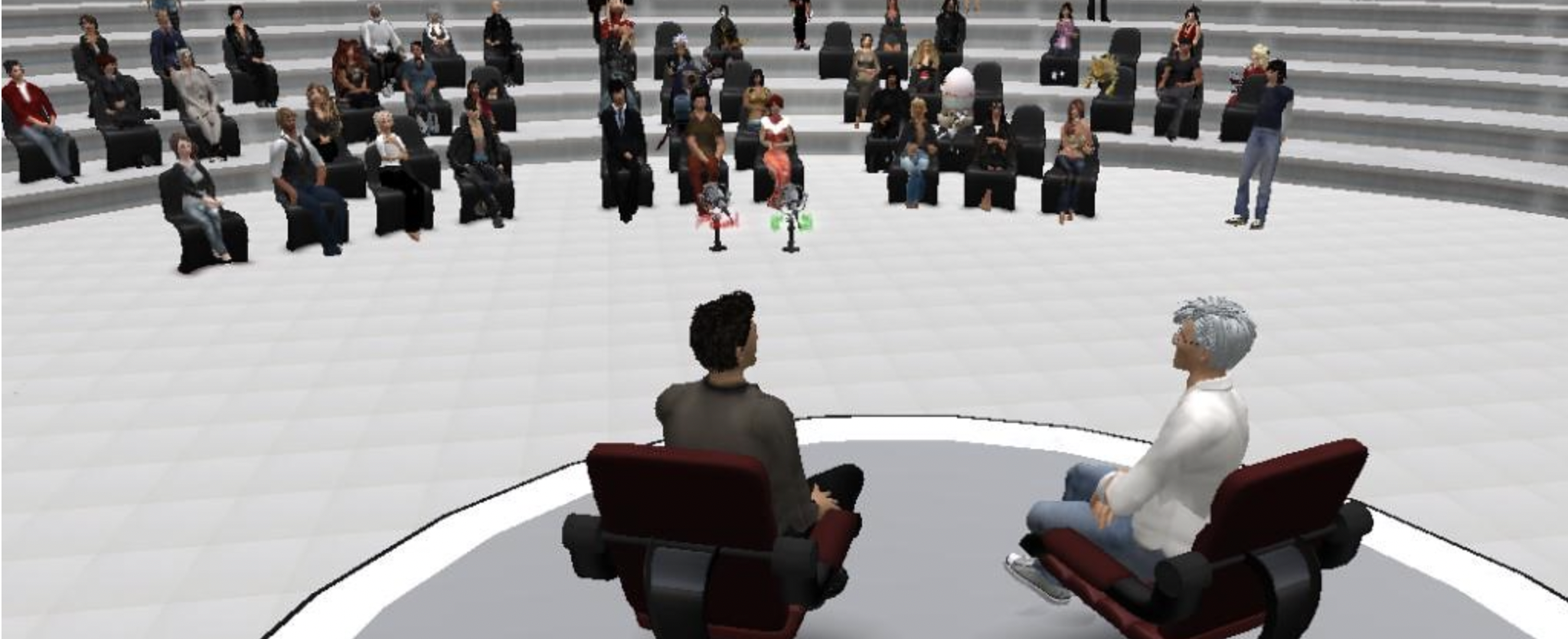
Noam Chomsky was having issues. He couldn't figure out how to sit down.
It was Chomsky's first appearance as an avatar in a virtual world.
The Metanomics episode was a huge success (you can still read a transcript of it here). Only Philip Rosedale had ever attracted a bigger crowd.
But I honestly doubt Chomsky even looked at the world, his avatar, the 'back chat' or at the crowd that was gathered to watch him speak.
While millions were living second lives with their avatars, many others still couldn't quite figure out the idea of having a virtual representation of themselves. Or, more practically, they couldn't figure out how to sit down.

Everywhere I Look I See Avatars
It seems like everyone has an avatar.
From their profile photo on Twitter to running around in Fortnite with that sweet skin you earned last season, everyone seems to be slipping in and out of digital identities.
By definition, they're all avatars: from 2D profile photos on Twitter or Discord to 3D representations in VRChat.
The Shifting Meaning of 'Avatar'
At one time, however, if you used the term 'avatar' you were usually confining your meaning to something far more specific: your avatar was your personalized 3D representation in some kind of virtual environment.
There was a subtle cultural difference between virtual worlds and game worlds (even though those terms, themselves, often blurred together):
- In game worlds, you often referred to your 3D representation as your 'toon. This implied a sort of detachment from your avatar. It wasn't really YOU, it was just the vehicle you used to drive through a game.
- In open worlds, your avatar was a representation of yourself. And 'self' in this sense didn't mean it had a 1:1 relationship to your physical self (or even your 'real' self's personality). You might represent yourself as a female while your physical self was male. You might be cool and silent while your physical self was outgoing and social. Your avatar was the conduit through which you expressed identity, personality and social signalling.
- How you represented yourself in 'flat' Internet forums might range from pfp (profile pic) to avatar - but it was clear that you meant it is your icon. You didn't particularly ascribe it with its own, separate identity - it was simply your 'badge' in a chat or on your Facebook page.
The use of these terms often signalled cultural divides.
I remember how offended people would get if someone said that they were "playing" in a virtual world. As in: "I love the avatar you're playing". It implied that you didn't understand that your avatar wasn't PLAY, that this wasn't a game, and that you were missing the point about avatar identity.
Similarly, in game worlds, you would see subtle schisms. There were those who viewed their game characters/avatars as 'toons - something they could use to show off the epic armour they won on the last raid, but hardly something to invest in emotionally. And then there were those who saw something more 'meta' in their avatars: a proxy for exploring collaboration, identity, lore and representation.
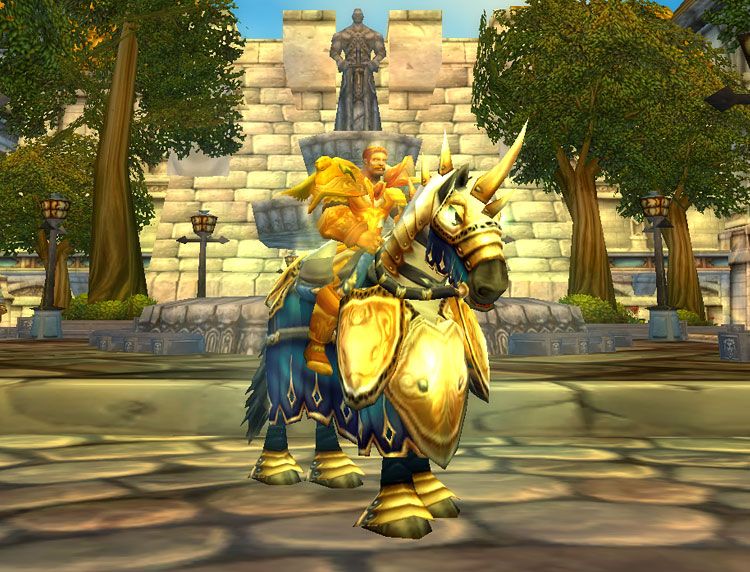
The WOW of Avatars
An early sign of the evolution of avatars was in World of Warcraft (WOW).
I spent weeks getting my Pally mount back in the day. It was a time when your horse wasn't just 'unlocked' at a certain level. And it wasn't packaged up with your subscription. You had to earn it.
And that involved gathering a group together (usually fellow guild members), walking to the instance (and remembering to bring enough Holy Water), and then fighting one of the bosses in the hopes that your mount would 'drop'.
Riding around on your mount after finally winning it in a run probably wasn't unlike the feeling of popping an NFT up as your Twitter profile: you now had bragging rights.
And the whole experience became fascinating to scholars, teachers and enterprise: they all started to wonder whether WOW represented some new form of collaboration. That maybe we should study it like we study a foreign culture. Or mine it for clues on how people collaborate online.
But there was a problem: because not unlike Noam Chomsky trying to sit down, not everyone had the patience for a half dozen dungeon runs just to earn their horse.
Blizzard slowly shifted the world to become a bit more like a mobile game: lots of dopamine hits, lots of rewards, many of the once rare items now available for sale, and with the path through the game far more proscribed and directed.
The world had been nerfed. More noobs were needed. Gold farming was outlawed and folks in China playing WOW for a living suddenly found themselves out of a job.
Even Steve Bannon moved on to other things.
There were other worlds to conquer.
The Promise of the 3D Avatar
But let's circle back for a minute to that concept of the 3D avatar as a representation of self.
This idea was considered to have profound and often liberating consequences:
You can express yourself as any gender (or even any species). In theory, this would encourage diversity. How people actually express or reveal their race, however, can lead to ambiguous conclusions as to whether avatars are 'post-racial'.
Your avatar can be detached from your physical world identity. Pseudo-anonymity is often assumed in today's online environments. And so you can be highly successful in a digital world without anyone knowing that you're "too young" or "too old" or less rich and beautiful than your avatar.
Although your avatar is a separate thing, it still transmits an incredible amount of data from your physical self. Now - this one is a bit tricky, and even counter-intuitive. It's something that Philip Rosedale has spent a lot of time thinking about and I remember long chats with him on the topic back in the day.
It's the idea that, even in addition to voice or text chat that is 'transmitted' through your avatar, other people receive very subtle and seeminlgy invisible signals. Slight delays in text responses, the direction your avatar is facing in a virtual space, even sub-conscious clues that are sent through animations attached to your avatar - all of them result in other people being able to detect a wide range of emotional cues.
Philip's focus was in increasing the bandwidth of these signals and reducing their latency. Today, facial and body tracking can directly couple your physical body to your avatar and thus transmit social and emotional signals.
But I've always been more interested in how an avatar conveys emotional bandwidth in ways that aren't explicitly tied to your physical self: other people can detect whether you're sad or distracted, even if there is no clear throughput from body to avatar.
You avatar communicates back to your physical self. Because the reverse is also true. And this one is also mind-blowing: because by 'occupying' an avatar, it can have a direct impact on our physical selves. One theory for this was related to mirror neurons: it implied that our mind can attach to avatars in a way that is similar to how we attach to physical bodies. If my avatar is obese, it will have an impact on my self-image. (And so how will that play out in Facebook's move to conquer the Metaverse? See Instagram).
Avatars Today, And A Shuffling of Signals
Today, avatar-based projects are the source of some of today's deepest innovations in the pre-Metaverse.
They build on a rich history: one in which we've seen the decks shuffled multiple times on what we mean by the word, the degree to which we ascribe 'selfness' to our digital identities, and their role in larger systems and cultures.
Take a few examples:
"Flat" Avatars As Social Signals: All of those cartoony images you see as profile photos on Twitter hold deep social signals. It may be one of the great shifts: the icons on our social channels hold deeper social signals than the skin we use in Fortnite.
These pixelated images hardly look like a rich game character, but they transmit more social signals than my old Pally in WOW (plus, they have a Hollywood agent):
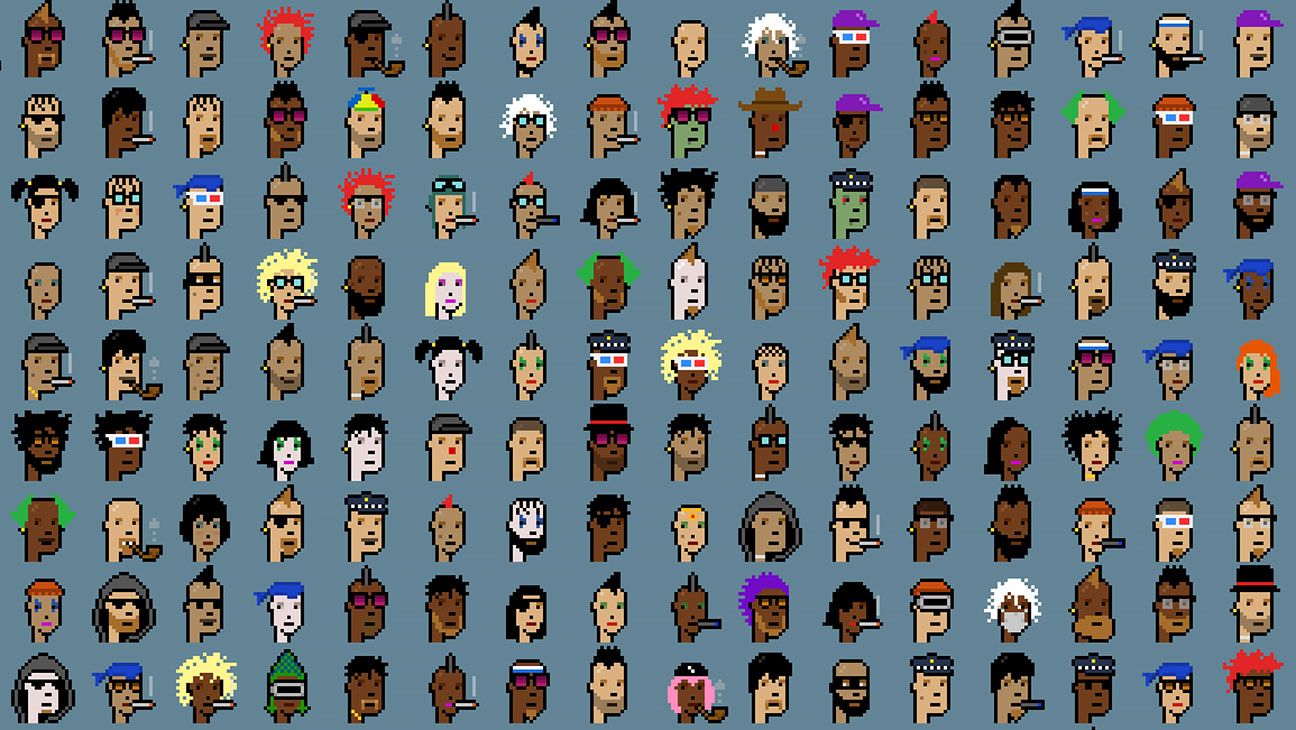
Avatars as Disposable Skins: The success of Fortnite should be credited to their discovery of a fun gameplay mechanism. But their business success was marked by making the game free and by making money on skins and other accessories ($9 BILLION worth).
The fact that your avatar feels more disposable is thus quite intentional. You're playing (and paying) to earn new bragging rights. Sure, your avatar looks cool - but it's SO Season 2.
There's a second benefit to the disposability of how your avatar appears: it allows Fortnite to mix up IP. You'll see an Ariana Grande avatar fighting alongside Superman. Sure, $9 billion is a lot of money - but what Epic has actually unlocked is the ability to mix-and-match IP in a way that will create a narrative for the Metaverse.
Avatars As Interoperable Identity: Ready Player Me almost harkens back to an older approach to avatars. They're expressions of your digital self. The company is hoping you'll feel attached to that expression, and will incentive your use of the avatar by making it portable into many different virtual spaces.
It's ONE avatar, MANY worlds:
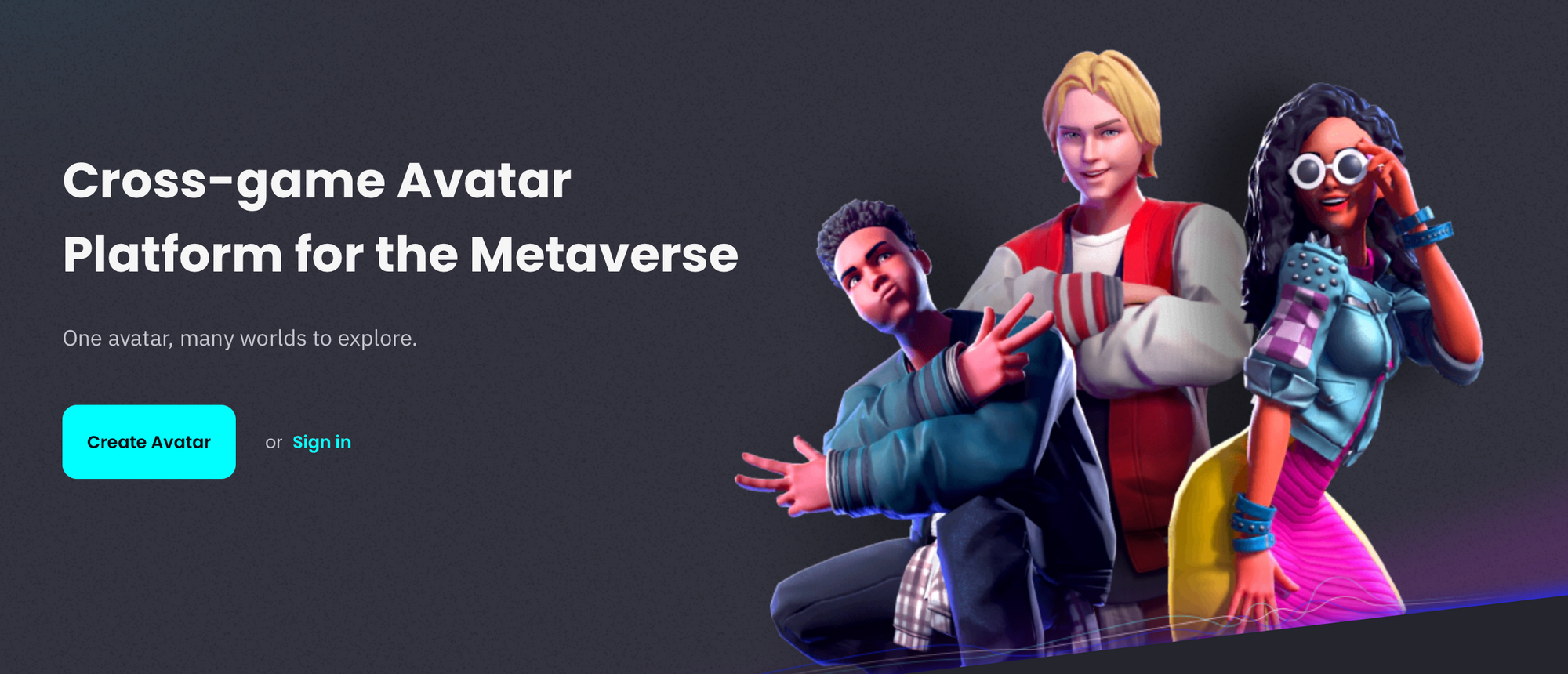
The Next Level of Avatar Innovation
Avatars are proving to be one of the foundation components of the emerging Metaverse.
Hundreds of projects let you buy a 2D avatar as an NFT. These 2D avatars don't just represent a graphic, they represent a social signal, they contain a transactional dollar (or bitcoin) value, and act as building blocks for community-involved IP and story development.
Game companies like Epic are also pushing the transactional and IP value of avatars - although in a centralized way.
Other projects like Crucible are exploring how the 'affordances' attached to our avatars will form a new backbone to web3 exploration. Interoperable friends lists, for example, will let us span multiple game and virtual worlds but carry important connections with us.
And yet I still think that we're at the earliest days of what avatars will become. We can carry with us the rich history of avatars and their meaning and transactional value, but we also need to be open to far more expansive definitions:
Avatars will be semi-autonomous: I've written about this before, but it's the idea that AI and blockchain models like DAOs are pointing to a future in which our avatars will often act without us. Our physical selves might log out, but our avatars will be programmable and will run errands in our absence (or vote in a DAO, or bid on some land while we sleep).
Avatar interoperability will be AI rather than human driven: one of the central questions about an interoperable Metaverse is how will my avatar LOOK in various worlds? Some of those worlds might have a high degree of resolution and look almost real, and others will be more like Minecraft and voxelized.
So will we need to have multiple 'versions' of our selves? I'm of the opinion that AI will eventually solve for this - a bit like style transfer currently works in machine learning:
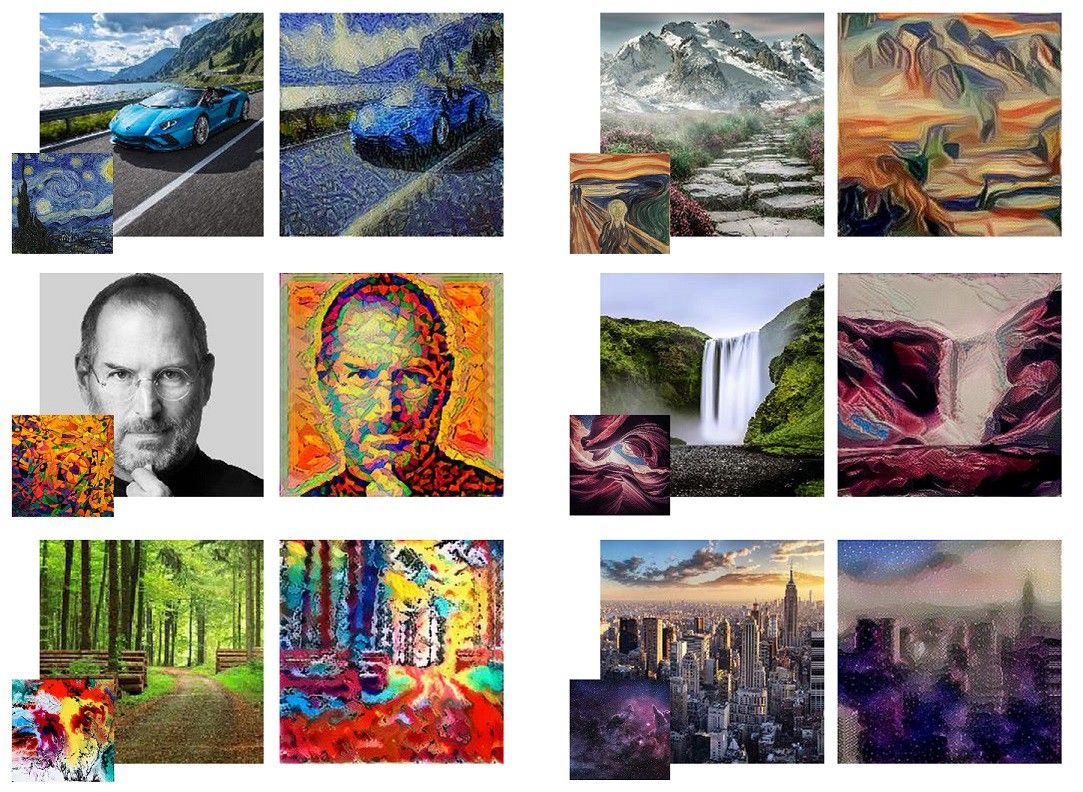
Instead of designing multiple versions of our avatar, the machines will transfer our base avatar to the style of whatever world I enter.
Avatars as Readable Text: The other approach to this might be more akin to an idea that Jin has been exploring - that avatars may, instead of having a 'core' body, instead carry a text description that will be 'interpreted' by the worlds we enter (click through to read thread):
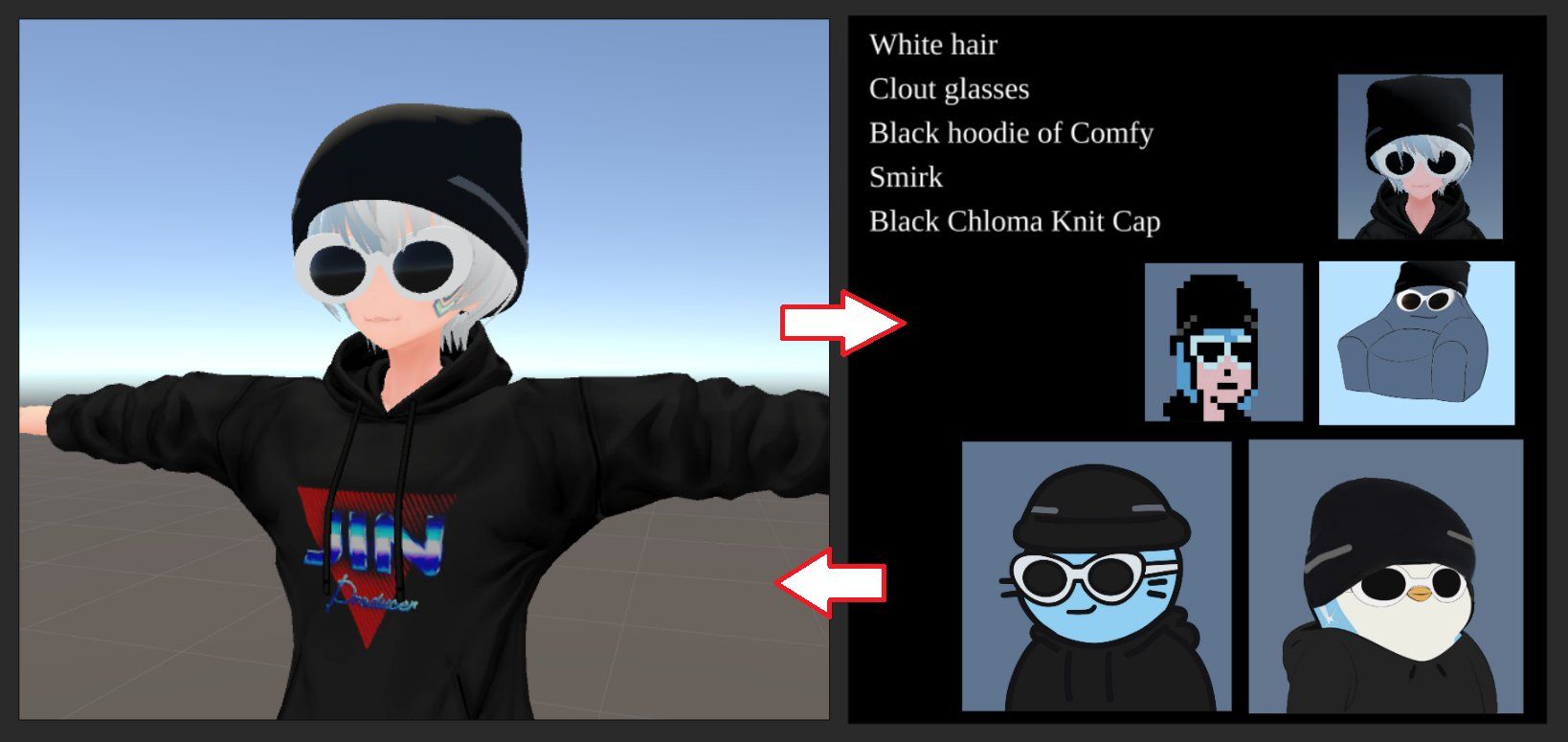
Avatars Will Capture Economic Benefit: Blockchain and web3 are pointing to new ways that economies will be organized, both offline and on. Today, much of the economic value of the web is invisible: post something to Facebook and it generates economic value (for Facebook, and its advertisers).
Blockchain-based economies promise to make the transaction layer visible, and thus more open to innovation. But these innovations will also tip into fiat-based worlds: Roblox already allows users to make money from their creations, and the creator-based economy will continue to grow.
But there's something deeper related to avatars: because instead of just 'attaching' a wallet, say, or having an inventory, your avatar itself will become an economic node. This has the potential to create entirely new forms of economies that aren't just avatar-based, but avatar-centric.
Avatars Won't Always Be Real People: And how will we know? We will see interesting innovations around both avatars being so 'real' that you can't tell they're AI, and methods for verifying identity. For a hint of where this might be headed, have a look at Worldcoin which is storing an image of your eyeball on the blockchain as a method of identity verification.
Avatars Will Be Movie Stars: I wrote previously that I thought Epic Game's Metahumans would upend entire industries. But it was really just one of many projects where avatars are becoming media stars in their own right. We may not JUST use our avatars in game-like worlds - we will also use them when we stream on Twitch or when we walk down the street and are seen by others using augmented reality glasses.
Who Will YOU Be In The Metaverse?
The reality is that to most people none of this will matter. Or it won't matter at first.
You might find yourself in the Metaverse because you followed a 3D model of a pair of shoes on Instagram. Or maybe you first logged in so you could attend a Deadmau5 concert.
You grab a skin, you customize it, and maybe over time you gravitate towards having a single virtual representation of yourself.
Soon, you find your avatar has a friends list, a wallet, an inventory. And one day you join up for a guild where you can play to earn - and find that you can make a decent living while 'working' in the Metaverse.
The innovations happening now are establishing new ways to think about how people will enter the Metaverse. Those innovations mean that our definitions and how we use avatars are fluid.
History is only a partial guide: social signalling, diversity, the real-world impacts of avatars....all of these will continue to be important but configured in new ways.
Avatars are another proof that our forms of self-expression, socializing and culture are shifting. It's an exciting and often confusing time.
And with any luck, it will be a lot easier for the first billion people who enter the Metaverse to find themselves a seat in this global community of digital expression.
